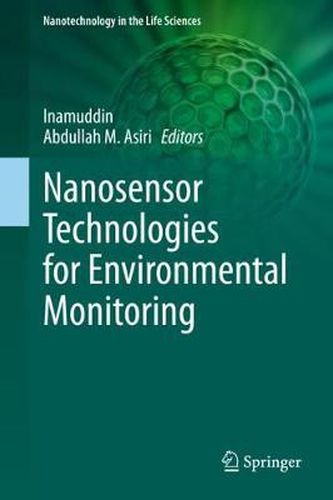Readings Newsletter
Become a Readings Member to make your shopping experience even easier.
Sign in or sign up for free!
You’re not far away from qualifying for FREE standard shipping within Australia
You’ve qualified for FREE standard shipping within Australia
The cart is loading…






This title is printed to order. This book may have been self-published. If so, we cannot guarantee the quality of the content. In the main most books will have gone through the editing process however some may not. We therefore suggest that you be aware of this before ordering this book. If in doubt check either the author or publisher’s details as we are unable to accept any returns unless they are faulty. Please contact us if you have any questions.
Advanced materials and nanotechnology is a promising, emerging field involving the use of nanoparticles to facilitate the detection of various physical and chemical parameters, including temperature, humidity, pH, metal ion, anion, small organic or inorganic molecules, gases, and biomolecules responsible for environmental issues that can lead to diseases like cancer, diabetes, osteoarthritis, bacterial infections, and brain, retinal, and cardiovascular diseases. By monitoring environmental samples and detecting these environmental issues, advanced nanotechnology in this type of sensory technology is able to improve daily quality of life.
Although these sensors are commercially available for the detection of monovalent cations, anions, gases, volatile organic molecules, heavy metal ions, and toxic metal ions, many existing models require significant power and lack advanced technology for more quality selectivity and sensitivity. There is room in these sensors to optimize their selectivity, reversibility, on/off ratio, response time, and their environmental stability in real-world operating conditions.
This book explores the methods for the development and design of environmentally-friendly, simple, reliable, and cost effective electrochemical nanosensors using powerful nanostructured materials. More specifically, it highlights the use of various electrochemical-based biosensor sensors involved in the detection of monovalent cations, anions, gases, volatile organic molecules, heavy metal ions, and toxic metal ions, with the ultimate goal of seeing these technologies reach market.
$9.00 standard shipping within Australia
FREE standard shipping within Australia for orders over $100.00
Express & International shipping calculated at checkout
This title is printed to order. This book may have been self-published. If so, we cannot guarantee the quality of the content. In the main most books will have gone through the editing process however some may not. We therefore suggest that you be aware of this before ordering this book. If in doubt check either the author or publisher’s details as we are unable to accept any returns unless they are faulty. Please contact us if you have any questions.
Advanced materials and nanotechnology is a promising, emerging field involving the use of nanoparticles to facilitate the detection of various physical and chemical parameters, including temperature, humidity, pH, metal ion, anion, small organic or inorganic molecules, gases, and biomolecules responsible for environmental issues that can lead to diseases like cancer, diabetes, osteoarthritis, bacterial infections, and brain, retinal, and cardiovascular diseases. By monitoring environmental samples and detecting these environmental issues, advanced nanotechnology in this type of sensory technology is able to improve daily quality of life.
Although these sensors are commercially available for the detection of monovalent cations, anions, gases, volatile organic molecules, heavy metal ions, and toxic metal ions, many existing models require significant power and lack advanced technology for more quality selectivity and sensitivity. There is room in these sensors to optimize their selectivity, reversibility, on/off ratio, response time, and their environmental stability in real-world operating conditions.
This book explores the methods for the development and design of environmentally-friendly, simple, reliable, and cost effective electrochemical nanosensors using powerful nanostructured materials. More specifically, it highlights the use of various electrochemical-based biosensor sensors involved in the detection of monovalent cations, anions, gases, volatile organic molecules, heavy metal ions, and toxic metal ions, with the ultimate goal of seeing these technologies reach market.